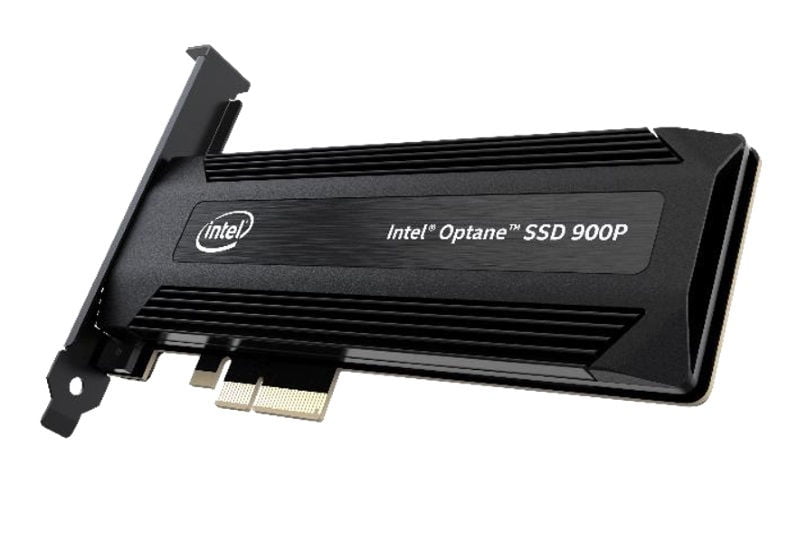

Intel promised to revolutionise PC storage and memory with its 3D Xpoint technology as far back as mid-2015. 3D Xpoint is a new type of flash memory developed jointly by Intel and Micron, and was touted as being 1,000 times faster and more reliable than the NAND flash used in current-day SSDs. Since then, Intel has launched only its Optane SSD DC 4800X for data centres and the rather underwhelming Optane Memory modules for PCs. Now, the company is finally ready with its mainstream Optane SSD 900P, which is aimed at enthusiasts and content creators who deal with large, complex, IO-intensive workloads.
According to Intel, the Optane SSD 900p is up to four times faster than today’s best PCIe SSDs such as the Samsung SSD 960 Pro, with up to 22 times the endurance. However, it is most effective in specific situations, particularly random read and write performance at queue depths between 1 and 4, which Intel says is more representative of day-to-day workloads than the best-case scenarios that many synthetic benchmarks aim to achieve.
Other than gaming, Intel highlights engineering simulations and media creation as target workloads that benefit from the Optane SSD 900P. For example, rendering a 7-second scene of a swirling whirlpool with billions of particles took 6.3 hours on a test system with an Optane SSD 900P as opposed to 17.4 hours with a PCIe SSD. Intel points out that content creators can get their work done in less time, or use the same amount of time to render higher quality output.
The Optane SSD 900P will be available as a 280GB U.2 module or 280GB and 480GB PCIe cards. Intel says it is not currently building models using the M.2 form factor due to power delivery and heat limitations. Higher capacities are in the works but additional models are not expected to be launched before the beginning of next year. Intel also said it is working on other Optane SSD models for laptops and desktops in the M.2 form factor next year. Optane SSDs will be bootable, and are compatible with most modern desktop PCs.
Random read and write speeds are rated at 550,000 IOPS and 500,000 IOPS respectively, while sequential read and write speeds are 2500MBps and 2000MBps respectively. Endurance for the 480GB model is rated at 8760TBW, referring to 8760 TB over the course of the drive’s life. The standard warranty is 5 years.
The 280GB models will sell for $389 (approximately Rs. 25,310) while the 480GB model will sell for $599 (approximately Rs. 38,975) in the USA. Intel has not announced India-specific pricing, but the devices are expected to be available globally at launch time. For the sake of comparison, the 1TB model of Samsung’s highly rated SSD 960 Pro is currently priced at $600.
Intel is launching the Optane SSD 900P at CitizenCon, an ongoing community event based around the massively mutiplayer online space simulation game Star Citizen. The game’s developer, Roberts Space Industries, says that it is optimised Star Citizen for the Optane SSD 900P. Specifically, Star Citizen takes advantage of the ability to read multiple files concurrently, reducing load times for huge amounts of texture and mesh data even at the highest possible settings. Buyers will get exclusive in-game content including a new ship called the Sabre Raven with unique weapons and stealth capabilities.
[“Source-gadgets.ndtv”]

